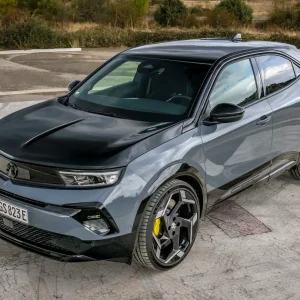Global interest in climate change continues to accelerate and businesses are under increasing pressure to contribute to wider environmental targets by reducing their carbon footprint and implementing more sustainable practices.
It’s not just targets and policy that are driving change however, there’s also been a shift in mindset and attitude, particularly amongst younger generations. Generation Z, or “The Sustainability Generation” as Forbes recently dubbed them, has been playing an instrumental role in encouraging companies to improve their green credentials. From day-to-day purchases to career paths, Gen Z, and Millennials, are known to make decisions based on their personal, social, and environmental values and principles. Greater social and environmental responsibility have become basic expectations and younger generations are increasingly pushing businesses to embrace more environmentally friendly ways of operating as both consumers and employers.
It is therefore not surprising that many companies have already placed sustainability at the top of their agenda. Whilst driving positive environmental change is often the primary objective, organisations are also recognising the impact implementing these initiatives can have on staying competitive and attracting new talent.
EVs remain central to reducing carbon emissions as organisations work towards Net Zero. Whilst growth in the sector has been vast over the last few years and the SMMT (Society of Motor Manufacturers and Traders) has reported a 49.9% year-to-date increase in pure electric vehicles on the road, there’s still more work to be done to boost uptake. Now more than ever, drivers are struggling to afford the higher upfront costs of EVs and are increasingly looking to employers for support.
Favourable tax rates driving demand
There has been a considerable rise in demand for EVs as company cars and favourable benefit-in-kind (BIK) tax rates have seen alternative funding methods, like salary sacrifice schemes, surge in popularity this year as businesses incorporate more sustainable and flexible solutions into their mobility plans. The British Vehicle Rental and Leasing Association (BVRLA) recently highlighted the pivotal role company cars play in influencing electric vehicle adoption in its #SeeTheBenefit campaign, whilst urging the Chancellor to commit to extending the reduced BIK tax rates for low and zero-emission cars past 2025 in the forthcoming Autumn Budget.
The low BIK rates currently in place to incentivise EV adoption are no doubt driving the flourishing salary sacrifice market. However, contrary to what some may believe, salary sacrifice is not a new trend. In fact, many businesses have been using it for some time in various forms; including childcare support, cycle-to-work schemes, gym memberships, retail vouchers, and of course, cars.
When it comes to the latter, salary sacrifice car schemes give businesses the opportunity to provide employees, including those who may have not been previously eligible for a company car, with the ability to access brand-new low and zero-emission vehicles by ‘sacrificing’ a fixed amount of their pre-tax salary each month. The BIK tax employees pay is based on the vehicle’s value and CO2
emissions, so by selecting a low or zero emission car, employees can pay very little tax – effectively making their money go further (compared to a car loan or hire purchase made after-tax). Whilst EVs may appear to come at a slightly higher price initially, lower running costs coupled with significant reductions in BIK tax and the income tax and NIC-free treatment of the ‘sacrificed’ amount mean participating employees can ultimately reap the rewards of long-term savings.
The benefits are numerous
It’s not just employees that can gain from salary sacrifice car schemes. Employers also have the advantage of working towards greener mobility by using salary sacrifice to make EVs more accessible and affordable for their employees. Unlike traditional company car schemes or cash allowances, salary sacrifice cars are a relatively low-cost benefit, and because employee contributions are deducted before tax, there’s also the potential for businesses to save on Class 1A NI.
Many companies have also seen a significant rise in private vehicles being used for business travel post-pandemic. ‘Grey fleets’ typically comprise higher emission, older vehicles that do not tend to be as regularly maintained in comparison to company cars. Salary sacrifice car schemes can help organisations manage their grey fleet duty of care, alongside their wider fleet emissions, by enabling cash allowance takers and employees who rely on private vehicles for business travel to opt for a new, fully-maintained, low emission car.
Taking the Leap
Implementing a salary sacrifice car scheme does not need to be a daunting task for businesses, even if they don’t currently offer salary sacrifice in other forms. Partnering with a trusted expert can simplify introducing and managing a scheme, helping to reduce administration and potential stressors for fleet managers and HR teams.
The Bottom Line
Salary sacrifice car schemes have the potential to deliver savings for both businesses and employees, paving the way to more sustainable mobility without the financial burden of comparatively high costs for either party. This funding option is a smart strategic move for businesses looking to attract and retain employees by providing a benefit that helps make EVs more affordable in the midst of the rising cost of living.
We’re at a crucial point in time for EV adoption and a salary sacrifice car schemes can help businesses contribute to their own sustainability targets while implementing key changes in order to stay one step ahead of the rapidly approaching government deadlines for Net Zero.
David Carey works on product management and development for Alphabet GB





